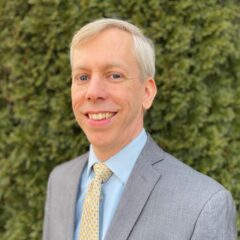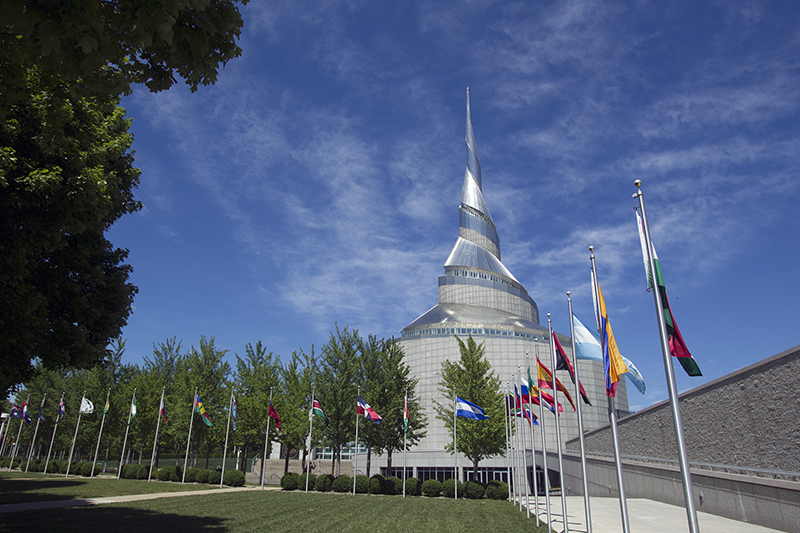
(RNS) — Community of Christ lost a stalwart leader when Wallace B. Smith died Friday (Sept. 22).
“Wally B.,” as he was known, was president of the Independence, Missouri-based Reorganized Church of Jesus Christ of Latter Day Saints (RLDS, later renamed Community of Christ) from 1978 to 1996.
During those nearly two decades he presided over major changes, the most controversial of which was opening the priesthood to women.
Many were surprised by this decision, because Wally B.’s father, W. Wallace Smith, was adamantly opposed to ordaining women. Since he’d been the church’s president from 1958 to 1978, many RLDS members assumed his conservative views had rubbed off on his son.
Not so. During a two-year preparation period from 1976 to 1978, Wally B. began meeting with certain “stakeholders” within the denomination to understand how its administration functioned. One of those was Marge Troeh, a strong proponent of women’s ordination and head of the church’s Women’s Commission.

David Howlett, religious studies professor at Smith College. Courtesy photo
“She would assign him readings in feminist theology, and he’d have to report back to her to discuss them,” said David Howlett, a religious studies professor at Smith College in Massachusetts and a member of Community of Christ. Howlett notes that the RLDS church was deeply divided on the issue of women’s ordination in the early 1980s; one survey sent to members showed they were split almost exactly down the middle.
Wally B. told fellow leaders, “We’re not going to solve this by a survey.” The story goes that he went to a nearby park and a revelation from God came to him, which the RLDS church canonized as scripture in 1984.
The decision took a toll. “There was a major church schism,” Howlett said. “Fully half of the tithing-paying members had left by the mid-1990s and probably about 20% of the total members had left.” But for those who stayed, women’s ordination helped to define the denomination’s identity going forward. By the mid-1990s, just a decade after the revelation, a quarter of the priesthood-holding adults in the church were women.
Another defining decision Wally B. made was to spearhead the effort to create the RLDS church’s temple in Independence, Missouri — a decision announced in the same revelation that included the decision to ordain women.
“That temple was to be for the purpose of pursuing peace and the reconciliation and healing of the Spirit,” said Howlett. “So with that announcement, peace and justice theology is written directly into the Doctrine and Covenants.” (The Doctrine and Covenants is a sacred work that gathers the revelations of the church’s leaders, as it also is in The Church of Jesus Christ of Latter-day Saints, though the LDS church has fewer of them.)
Unlike temples of the Utah-based LDS church, the Independence temple is open to the public for prayer and meditation.

The grounds of the Community of Christ Independence Temple on June 23, 2017, in Independence, Mo. RNS photo by Kit Doyle
A third change enacted during Wallace B. Smith’s presidency was to consciously release a hold on power, steering the church away from its tradition of keeping leadership within the members of the Smith family. Ever since Wally B.’s grandfather, Joseph Smith III, had helped to found the Reorganization in 1860, its presidents had all been Smith family men. At various points in the church’s history, it had trumpeted that line of succession as a sign of its divine heritage, in contrast to the better-known LDS church in Utah.
Wallace B. Smith chose a different future for the denomination. Before he retired from service, he appointed W. Grant McMurray to succeed him — the first to head the church who was not a direct descendant of Mormon founder Joseph Smith Jr.
Wally B.’s legacy will continue to be felt by members of the denomination that since 2000 has been called Community of Christ. Howlett credits Wally B. with suggesting the name Community of Christ, even though the change wasn’t formally approved until after his presidency. Wally B. also oversaw smaller changes that resonate to this day, like opening Communion to any baptized Christian or forging relations with the justice organization Bread for the World.
The Community of Christ will hold a celebration of Wallace B. Smith’s life on Oct. 8 in Independence and will stream the event live on YouTube.
Related content on the Smith family:
Joseph F. Smith: A traumatized and beloved Mormon leader
Mormon founder Joseph Smith’s photo discovered by descendant after nearly 180 years
The Mormon reinvention of Emma Smith
